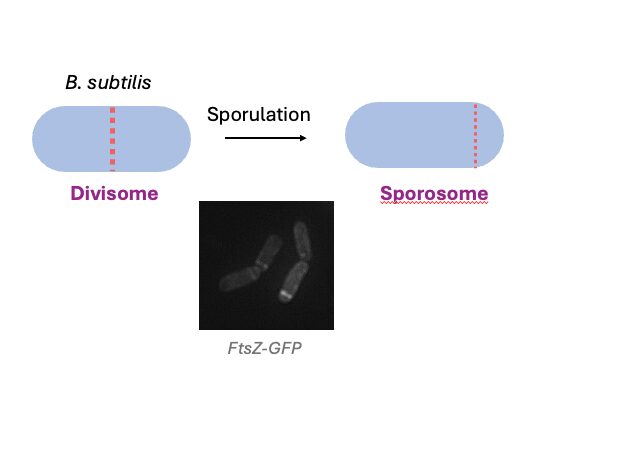My scientific journey began during my Master’s studies in the Systems Biology lab (PI: Luis Serrano) at the Center for Genomic Regulation (Barcelona), where I investigated transcription and translation regulation in a genome-reduced bacterium. Motivated to pursue a PhD, I moved to the Institut Pasteur with an international PPU fellowship and joined the Structural Microbiology Unit (PI: Pedro Alzari), where I studied how SepF and FtsZ regulate early cell division in Mycobacteriales and Archaea using a mechanistic approach that combined X-ray crystallography and microbiology. To expand my expertise in Cryo-EM after my PhD, I joined the lab of Han Remaut at the VIB-VUB Center for Structural Biology in Belgium, where I secured the EMBO and MSCA postdoctoral fellowships and focused on S-layer and endospore appendages (ENAs) using Cryo-EM, nanobody-assisted crystallography, and functional studies. Recently, I returned to the Institut Pasteur to join the Bacterial Cell Cycle Mechanisms group (PI: Anne Marie Wehenkel), aiming to combine integrative structural biology approaches with in vivo studies to uncover molecular mechanisms governing polar septation during sporulation.
The project: Cell division is fundamental across all domains of life, a highly coordinated molecular process where multiple protein complexes must play in harmony. In most bacteria, the director of this orchestra is FtsZ, which sets the tempo and location of cell division. FtsZ polymerises at midcell to form the Z-ring, a scaffold that signals assembly of the divisome, the dynamic machinery responsible for peptidoglycan synthesis, septum formation, and separation of daughter cells. Several regulatory mechanisms ensure that FtsZ polymerisation occurs only at midcell, yet exceptions exist. One striking example is sporulation, where unfavourable conditions lead to Z-ring assembly near a pole, resulting in a polar divisome. Growing evidence suggests that this polar divisome differs from its midcell counterpart in regulation, structure, and composition. We have named this specialised machinery the sporosome. My project aims to uncover how the sporosome diverges from the canonical divisome by working at the interface of integrating structural biology, molecular microbiology, and genetics.


